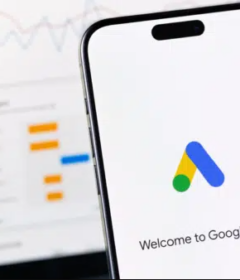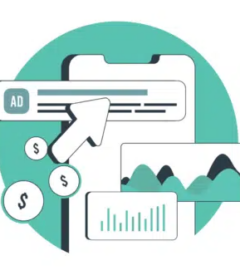Will YouTube’s new ToS increase ad inventory and lower prices?; Tuesday’s daily brief

Plus, rainbow-colored map pins, Google News Showcase on desktop and more.
Good morning, Marketers, were you surprised at YouTube’s updated terms of service announcement?
If you didn’t catch our newsletter yesterday, the TL;DR of it is that YouTube may now show ads on your videos even if you’re not part of the YouTube Partner Program (YPP).
As someone who writes about digital marketing, I wasn’t surprised, but as a user, it certainly leaves a bad taste in my mouth. Gone are the days of brands delivering ad-free video experiences hosted on YouTube, but they shouldn’t have counted on that anyway because of the control they give up in exchange for discoverability on the world’s biggest video website. Creators and users have little choice but to accept the change, and if your brand’s videos are getting strong views, you’re incentivized to join YPP to get your cut of the ad revenue.
One has to imagine that this means more ads, which would mean more inventory. Would that lower the cost of ads, though? And, how might a heavier ad experience affect YouTube’s user base? We’re going to ask those questions and get back to you.
If there are other questions you want me to ask, shoot me a note at gnguyen@thirddoormedia.com (subject line: You can skip this ad in 500 seconds).
George Nguyen,
Editor
Yelp adds the LGBTQ-owned attribute and rainbow-colored map pins for Pride Month

Yelp’s profile attributes continue to grow. Yesterday, the company announced the LGBTQ-owned attribute to enable businesses to self-identify as such, adding to its existing women-owned, Black-owned, Latinx-owned and Asian-owned attributes. In addition, during Pride Month (the month of June) Yelp is also featuring rainbow-colored map pins to highlight businesses that are LGBTQ-owned or “Open to All” (a non-profit, anti-discrimination campaign).
These attributes appear on business profiles in both Yelp’s mobile app and the Yelp website, and both the attribute and Pride Month map pin can help you stand out to customers looking to support LGBTQ-owned businesses. Domestic searches on Yelp’s platform for LGBTQ+-owned businesses rose by more than 150% in April, compared to the same period last year, so there’s new demand that might benefit your business. And, as the pandemic subsides, consumers may look to express pent-up demand by traveling or patronizing businesses they were previously reluctant to due to safety concerns — distinguishing yourself can enable you to make the most out of that pent-up demand.
Practice problem rich results now viewable in Google performance report

Google launched a new search appearance filter in the performance report within Search Console for practice problem rich results. If you have rich results for practice problems, then you may see this new search appearance filter in the performance report. You can access it by clicking on the “+ NEW” button and then selecting the “Search appearance” option; there it should list “practice problems.”
Back in March, Google introduced debugging tools for the practice problems in Search Console. Now, Google has added performance reporting to the mix.
Why we care. Now you can see if adding practice problem structured data is having a positive impact on your click through rate and Google organic search traffic.
Google News Showcase now available on desktop, adds enhanced panels on mobile

Google launched its desktop News Showcase option for publishers yesterday. The desktop News Showcase is available in the same countries where the mobile version is: the U.K., Australia, Germany, Brazil, Argentina, Italy, Czechia and India.
The new desktop option allows publishers to reach potential readers on multiple devices and includes a new sidebar panel to help users discover more national and local news. Publishers will also get a News Showcase tab on their News landing pages. “Here, readers can see all their News Showcase panels: the latest Rundown panel, covering the most important issues for a publisher every day, and their story panels, which give readers deeper context on important articles,” wrote Alex Cox, Product Manager of News.
Why we care. If you’re a publisher that relies on Google’s News Showcase for a chunk of your traffic, the addition of desktop could mean a larger potential audience to drive to your site (from a new device type). It also means to ensure that your news site is still performing well on desktop too (no intrusive interstitials, make sure it loads quickly, make sure ads aren’t annoying).
@AdsLiaison has arrived, WTS turns two and Sundar sits down with MKBHD

Sundar Pichai talks tech and AI with MKBHD. MKBHD is my favorite YouTube tech reviewer. He’s interviewed Elon Musk, Satya Nadella, Mark Zuckerberg and now, Sundar Pichai. In the YouTube video, Pichai discusses the announcements from I/O last week (LaMDA), his views on the potential downsides of AI as it continues to advance, tech CEOs as celebrities and more.
PPC pros, follow @AdsLiaison. Many of you may already be following Ginny Marvin, ads product liaison at Google and former Search Engine Land editor-in-chief on her personal Twitter account, but starting yesterday, she began tweeting from an official account: @AdsLiaison. Hopefully, this account will facilitate greater transparency and more communication between Google and advertisers.
Women in Tech SEO turns two. This week, Women in Tech SEO, a support network for women in the technical SEO space, will be celebrating its second anniversary — congratulations! In that short time, the community has grown to include over 4,000 members, hosted two dozen virtual workshops and built a wonderful speaker hub, to name a few of its accomplishments. Consider joining yourself or just following the community on Twitter to help this much-needed resource continue to flourish.
GPT-3 can write convincing disinformation posts
We’ve spilled a good amount of ink covering GPT-3, OpenAI’s algorithm that can be used to generate text, images, fill in code and so much more. In its current state, search marketers can use it to create ad copy or content briefs, but the technology seems to struggle with long-form content.
So, where is short-form content most dangerous? A team at Georgetown University’s Center for Security and Emerging Technology has used GPT-3 to generate misinformation, ranging from false narratives to altered news articles to — you guessed it — tweets.
“In experiments, the researchers found that GPT-3’s writing could sway readers’ opinions on issues of international diplomacy,” Will Knight wrote for Wired. The GPT-3-written sample tweets shown to study participants were about U.S. sanctions on China and the withdrawal of U.S. troops from Afghanistan. “In both cases, they found that participants were swayed by the messages,” Knight said, “After seeing posts opposing China sanctions, for instance, the percentage of respondents who said they were against such a policy doubled.”
The article makes it clear that fine-tuning GPT-3 to create such content is quite a challenge: “[Georgetown University professor Ben Buchanan] notes that the algorithm does not seem capable of reliably generating coherent and persuasive articles much longer than a tweet.” But, where there’s a will, there’s a way. Let’s just hope our resolve to fight misinformation is just as strong.



